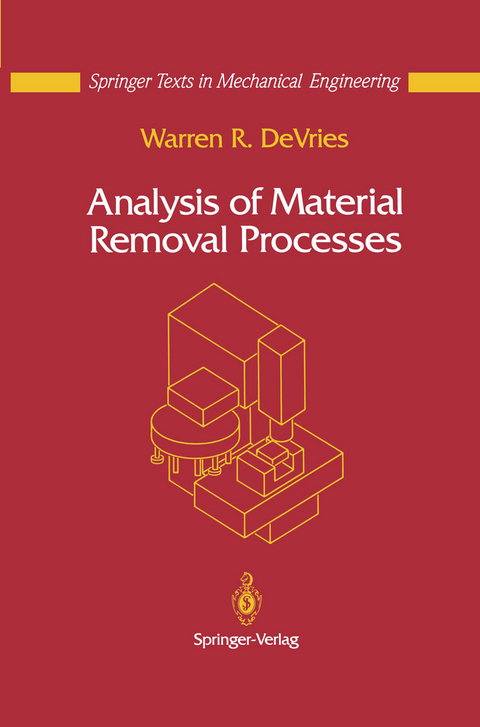
Analysis of Material Removal Processes
Springer-Verlag New York Inc.
978-1-4612-8759-9 (ISBN)
1. Introduction.- 1.1 The Design Problem In Material Removal — Process Planning.- 1.2 Analysis of Material Removal for Process Planning.- 1.3 References.- 2. Metrology, Quality Control and Data Analysis.- 2.1 Metrology.- 2.2 Tolerancing.- 2.3 Quality Control.- 2.4 Experimental Design Methods for Empirical Data.- 2.5 References.- 2.6 Problems.- 3. Mechanics and Thermal Models for Machining.- 3.1 Classification of Chip Formation.- 3.2 Mechanics Models for Machining.- 3.3 Steady State Temperatures.- 3.4 References.- 3.5 Problems.- 4. Edge Materials, Wear and Fluids for Cutting and Grinding.- 4.1 Cutting Edge Materials.- 4.2 Cutting and Grinding Fluids.- 4.3 Wear of Cutting Edges.- 4.4 References.- 4.5 Problems.- 5. Practical Machining Processes.- 5.1 Common Factors and Analysis Methods.- 5.2 Turning and Facing.- 5.3 Face and End Milling.- 5.4 Drilling.- 5.5 References.- 5.6 Problems.- 6. Grinding Processes.- 6.1 Comparing Grinding With Cutting Processes.- 6.2 Terms and Specifications for the Grinding System.- 6.3 Kinematics of Grinding.- 6.4 Calculations for Planning a Grinding Cycle.- 6.5 References.- 6.6 Problems.- 7. Machining Economics and Optimization.- 7.1 Terms and Notation for Turning Optimization.- 7.2 Maximum Production Rate or Minimum Production Time.- 7.3 Minimum Unit Cost.- 7.4 Maximum Profit Rate.- 7.5 References.- 7.6 Problems.- 8. Modeling Machining Vibration for Stability Analysis.- 8.1 Classification of the Types of Vibration in Machining.- 8.2 Stability Analysis in Turning.- 8.3 Stability Analysis of Cylindrical Plunge Grinding.- 8.4 Some Practical Ways to Diagnose and Minimize Chatter.- 8.5 References.- 8.6 Problems.- Appendix Code for Simulation Examples.- 1 C Code for Example 5.3 Simulation of Face Milling.- 2 C Code for Example 8.1 Single Degree ofFreedom Stability Analysis for Turning.
| Reihe/Serie | Mechanical Engineering Series |
|---|---|
| Zusatzinfo | XVIII, 254 p. |
| Verlagsort | New York, NY |
| Sprache | englisch |
| Maße | 155 x 235 mm |
| Themenwelt | Naturwissenschaften ► Physik / Astronomie ► Mechanik |
| Technik ► Maschinenbau | |
| Wirtschaft ► Betriebswirtschaft / Management ► Planung / Organisation | |
| Wirtschaft ► Betriebswirtschaft / Management ► Unternehmensführung / Management | |
| ISBN-10 | 1-4612-8759-6 / 1461287596 |
| ISBN-13 | 978-1-4612-8759-9 / 9781461287599 |
| Zustand | Neuware |
| Haben Sie eine Frage zum Produkt? |
aus dem Bereich


